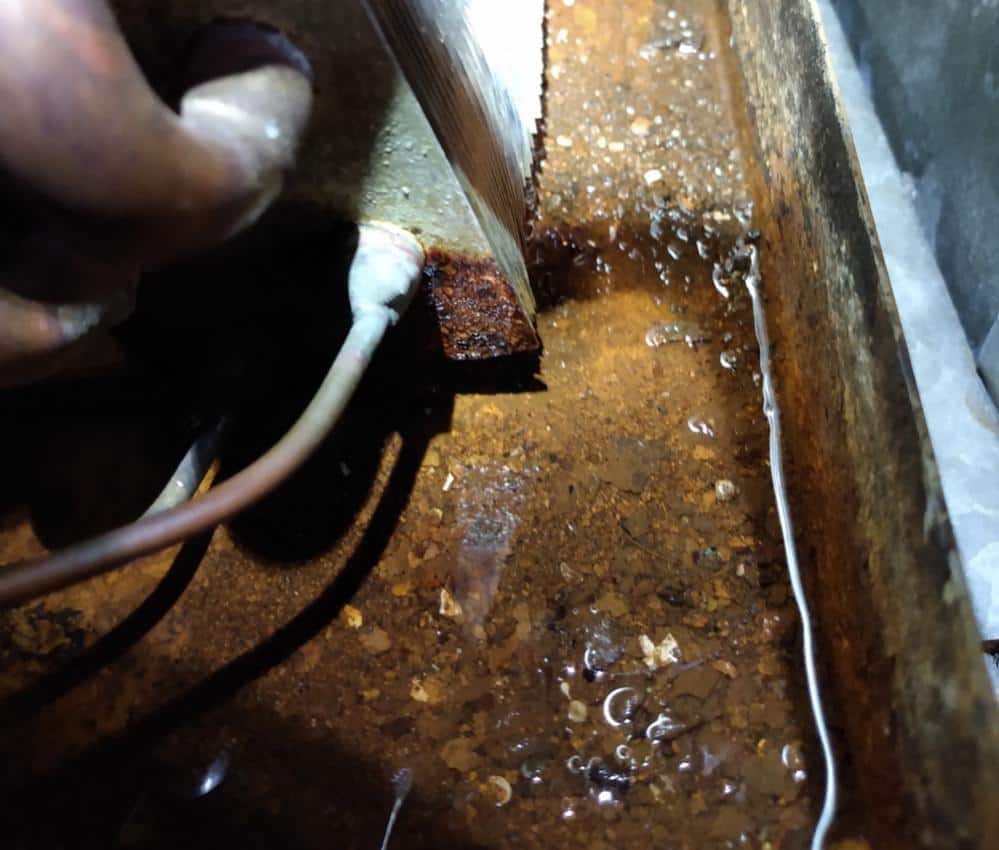key takeaways
Rust in condensate pump systems is caused by moisture exposure. This moisture exposure results in the oxidation of metal parts, especially in humid environments. Regular inspections, cleaning, and using rust-resistant materials such as stainless steel or plastic can prevent this rust.
If your condensate pump system has rust, you must clean and repair its components using safety precautions and appropriate tools.
Using rust-resistant materials for new condensate pump installations maximizes HVAC efficiency and lowers energy expenses.
The common cause of rust in your condensate pump system is due to excessive moisture. If the system is exposed to moisture for an extended period, particularly in places where water is not draining properly, the pump’s metal parts begin to oxidize.
This can cause rust in your condensate pump system. High temperature, exposure to contaminants, and specific metal composition can also cause rust in your condensate pump system.
Environmental factors such as humidity, condensation, and exposure to contaminants cause rust formation in condensate pump systems. High humidity levels create a moist environment that results in condensation on metal components. Over time, stored moisture increases oxidation, which builds up rust.
Not only this, but exposure to contaminants like dust, dirt, and chemicals increases the rusting process. These particles can settle on metal surfaces and react with moisture which accelerates rust formation.
The material composition of condensate pump systems influences their susceptibility to rust and corrosion. Metal components, especially those constructed of iron or steel, are highly susceptible to rusting when exposed to moisture.
Over time, this exposure causes oxidation that results in rust on the surfaces of these materials.
Additionally, galvanic corrosion can occur when two dissimilar metals come into contact in the presence of an electrolyte, like water. This process leads one metal to corrode faster than the other.
Use corrosion-resistant materials, such as stainless steel, or integrate protective coatings to reduce rust and increase the life of the condensate pump system.
You can fix rust in your condensate pump system by following some safety precautions and by using some particular tools needed for rust removal. You can fix the problem yourself if there is some minor rust in your condensate pump system. But, in case of excessive rust, you can repair the parts or replace the complete pump system.
When cleaning and repairing rusty condensate pumps, it’s essential to follow key steps to get maximum safety and effectiveness.
It depends on the severity of the rust damage when replacing or repairing the dusty components in a condensate pump system. Deep pitting, holes, structural weakening, and pieces that are no longer functional despite cleaning are all signs of irreparable rust damage.
If rust has damaged the integrity of important components, such as the pump casing or motor, replacement is typically the best option.
A cost analysis is required when deciding between replacement and repair. You can clean and fix minor surface rust for a low cost. Especially if only tiny items such as screws or clamps need to be replaced. But, if the rust is excessive it needs major labor, part replacements, or regular repairs which cause more expenses. In such cases, replacing the complete pump system saves money in the long run.
When there is rust in your condensate pump system, it can cause many issues like clogged condensate lines and damage to electrical components. This can impact the overall system performance. It can affect the system’s capacity and can result in increased energy consumption and costly repair.

Rust in your HVAC systems can impact the system’s performance and increase energy consumption. When rust builds on components like the condensate pump, fans, or coils, it affects the system’s capacity to function properly.
This rust can cause blockages and restricted airflow that require the HVAC system to work harder. This system’s inefficiency increases energy usage which results in higher electricity bills.
Rust can also lead to more frequent breakdowns and costly repairs or replacements, which reduces overall system performance.
Rust in HVAC systems can create a variety of issues such as clogged condensate lines and damage to electrical components. Rust in condensate pump systems or drainage pipes can cause clogs. Such barriers cause water damage in the surrounding areas.
It reduces your HVAC system’s ability to remove moisture. Furthermore, rust can corrode connections on electrical components such as circuit boards or cables causing issues like short circuits or system faults.
You can prevent rust in your condensate line by regular inspection and cleaning. The use of anti-corrosion treatments also prevents metal from rusting. The use of rust-resistant materials such as stainless steel and plastic alternatives can also prevent rust in your condensate line.
Consult With HVAC Expert
Need reliable HVAC service? Contact us today for a free quote and expert solutions to keep your home comfortable year-round
Get Free EstimateMaintaining rust-free condensate pipes requires ongoing attention and preventative actions.
When choosing rust-resistant materials for new condensate pump installations, always consider stainless steel and plastic alternatives. Stainless steel is an excellent choice due to its resistance to rust and corrosion. Furthermore, the chromium content provides a moisture-resistant barrier.
This makes stainless steel exceptionally durable and suitable for long-term usage in water-rich areas. Plastic materials like PVC and polypropylene are also excellent choices. These plastics are naturally rust-resistant and lightweight. The use of such materials extends the life of the system and minimizes the frequency of maintenance.
Schedule a free quote to learn how you can get a $10,000 rebate and 0% interest financing.
Start your savings today!